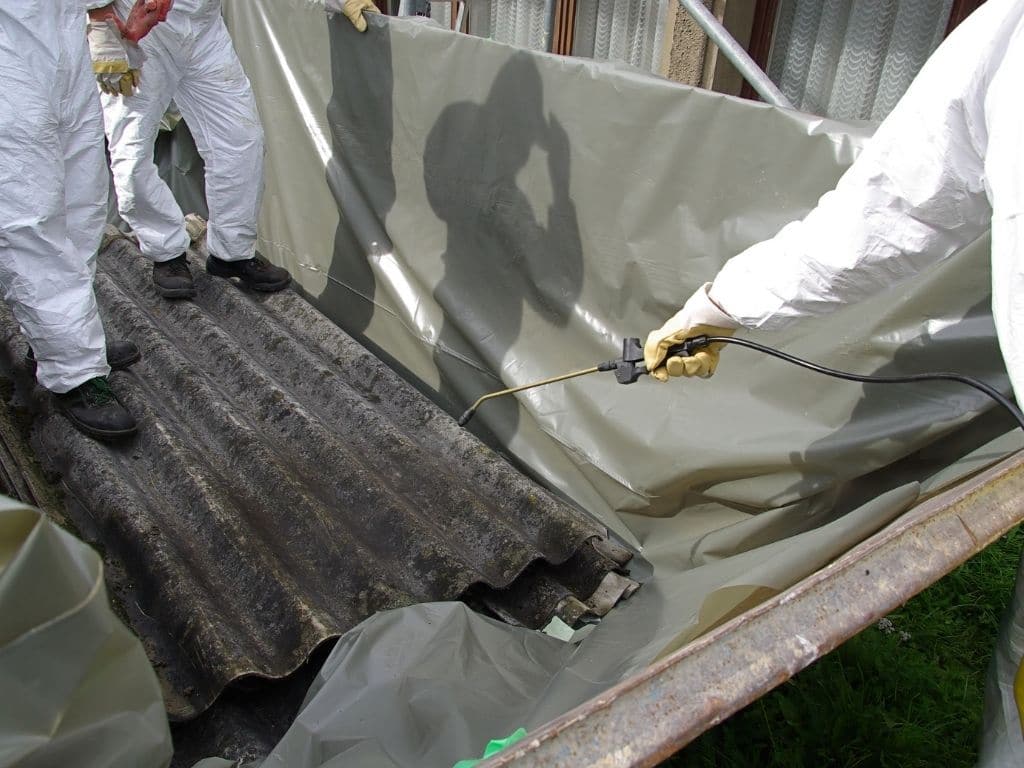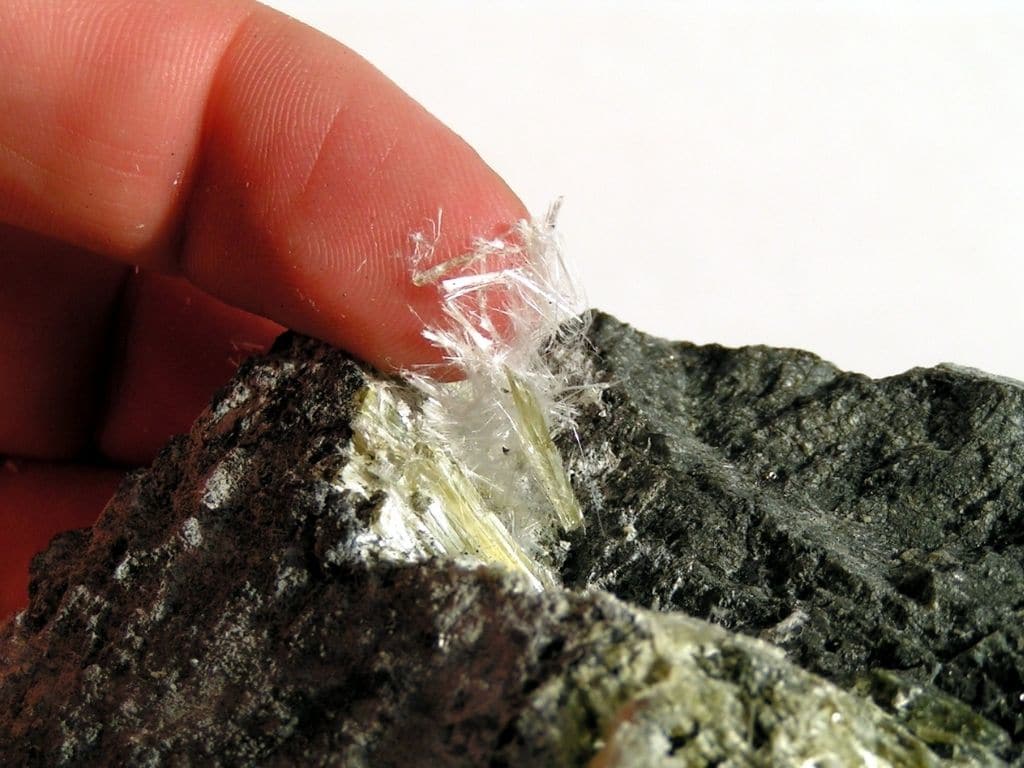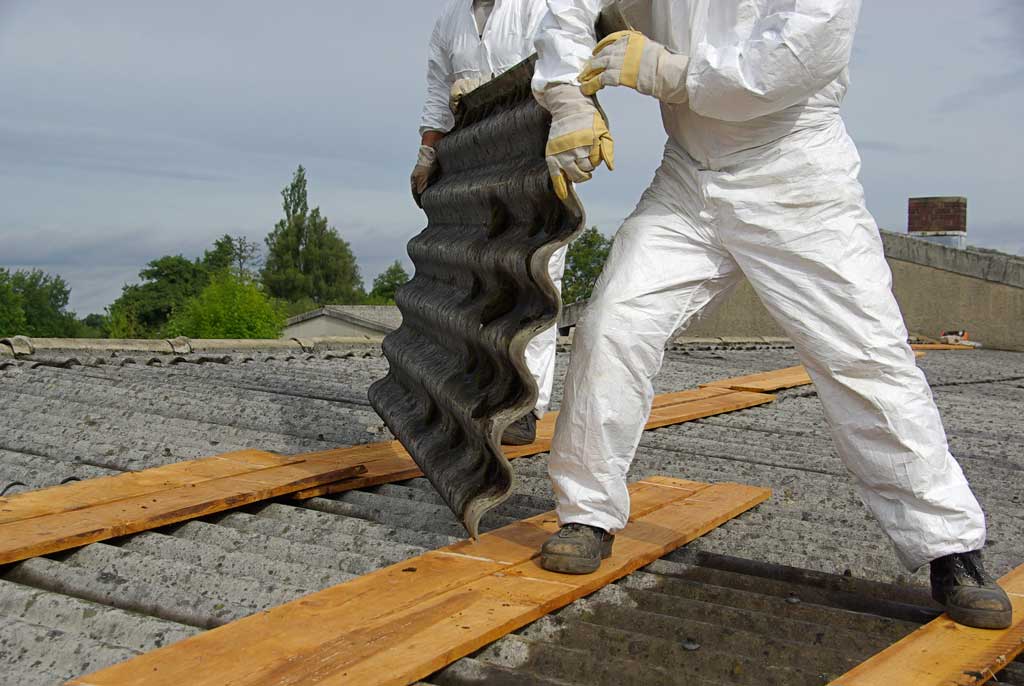What Does Asbestos Look Like? A Homeowner’s Guide

Asbestos: it’s a scary word, and one that almost everyone is at least somewhat familiar with.
You’re probably hearing a little more about it now that Canada reportedly has one of the highest mesothelioma cancer rates in the world as a result of asbestos exposure. Unfortunately, high usage of the material back in the mid-1900s has left its mark, and many are now realizing how serious the long-term effects can be.
Could you identify asbestos if you saw it in your own home? Do you really know what the material is and why it poses a legitimate threat to people?
Let’s take a deep dive into understanding asbestos, as well as tips for spotting it within your house and taking the appropriate steps to safely remove it.
What Is Asbestos?

We’ll begin by explaining what asbestos is and why it was commonly used in construction up until the 1980s.
Asbestos is a group of natural minerals that are all resistant to heat, fire, and electricity. This makes them seem like a great option for creating lots of products, but especially building insulation materials.
Many Canadian homes and businesses were insulated with these minerals, and it wasn’t until the 1970s that health studies indicated the danger of asbestos exposure. Many workers and homeowners who were exposed for years at a time developed serious cancers, as well as diseases like mesothelioma and asbestosis.
Asbestos in Canada
Nowadays, asbestos use is heavily regulated, and you won’t see new buildings or homes insulated with the material.
Still, some older homes built before the mid-1970s could hold asbestos. In fact, it wasn’t until 2018 that the Canadian government officially banned the use of asbestos (with minor exceptions).
Many believe the government’s restriction is not strong enough. In Canada, it’s estimated that asbestos exposure was responsible for as many as 1,900 lung cancer and 430 mesothelioma deaths in a single year. Understandably, many still fear the repercussions of too-lax regulations.
As much as we’d like to think all homeowners and workers are safe from asbestos exposure, there’s still a very real chance that you could encounter these materials. If you do, it’s imperative that you understand the risk and procedure for handling asbestos.
Why Is Asbestos So Dangerous?

Asbestos is composed of very thin fibres that are easily damaged during construction. When this happens, the fibres become airborne, toxic dust that poses a serious threat to humans.
When people breathe in these fibres, especially over long periods of time, they face a significantly higher risk of developing mesothelioma cancer in the lining of their lungs, heart, or abdomen. They can also experience other asbestos-related diseases and health problems, many of which cannot be diagnosed until at least 15 years after exposure.
How to Identify Asbestos – What Does It Look Like?

If you’re moving into or renovating a house that was built any time before 1980, there’s a risk that asbestos is present. Fortunately, you may be able to visibly identify asbestos in some cases.
There are four main types you might encounter:
- Chrysotile (white asbestos, similar in appearance to dust)
- Amosite (gold or brown asbestos, somewhat shiny in appearance)
- Crocidolite (dark blue asbestos, sometimes greenish)
- Anthophyllite (similar in appearance to chrysolite but greener)
Although you can possibly identify asbestos based on the descriptions of the four kinds, the best way to know for sure is to schedule an asbestos test. After all, it’s better to be safe than sorry when it comes to harmful, carcinogenic materials in your home.
When Homeowners Might Find and Identify Asbestos

Another way to identify asbestos before serious exposure is to know where it lurks. Here are some of the most common scenarios in which homeowners encounter asbestos.
Attic Renovations
Asbestos was commonly used to insulate attics before the 80s. Now, when homeowners go to remodel or clean out old attics, they may stumble across old insulation that’s full of dangerous asbestos fibres.
If you find old insulation in your attic, and it’s possible that it dates back more than 20 years or so, take the safe route and have it tested for asbestos before disturbing it.
Popcorn Ceiling Removal
This is one of the most common ways we hear about asbestos exposure incidents. Popcorn ceilings were all the rage back in the day, but any modern homeowner or renovator won’t hesitate to remove them.
Unfortunately, many popcorn ceilings contained asbestos, and if you begin to remove them without proper masks and ventilation, you can breathe in disturbed asbestos fibres. That’s why hiring asbestos removal professionals is the best way to get rid of a popcorn ceiling, even if costs more to do so.
Drywall Alterations
Another common method of asbestos exposure in today’s world is drywall drilling. When a homeowner drills holes into an old house’s walls, there’s a chance that the holes could release hidden asbestos fibres into the air.
Of course, it’s nearly impossible to know for certain if asbestos lurks behind your walls without taking a look. That’s why it’s always smart to schedule an asbestos inspection prior to moving into or renovating an older Canadian home.
Removing Vinyl Flooring
Asbestos wasn’t only used for wall insulation in old houses. The mineral fibres can also be found in certain adhesive materials, and when those materials are loosened during vinyl floor remodels, the fibres can be released into the air.
If your home has vinyl floor tiles that seem to have been installed anywhere between 1950 and 1980, proceed with caution. It may be smarter to install the new tile over the vinyl floors, rather than risk disturbing the asbestos during the removal process.
Cutting Insulation on Pipes
Lastly, we often hear about homeowners that cut the insulation around their pipes, only to disperse asbestos fibres into the air in their old basement. If you have an older plumbing system, don’t mess with the insulation by yourself. Instead, hire a professional to safely seal the asbestos insulation.
What Can I Do About Asbestos in My Home?

Whether you think you’ve actually spotted asbestos or you only suspect that it might be lurking behind a wall, don’t take any chances. Even a little disturbance can release the toxic spores into the air, compromising the safety of you and your loved ones.
Limit access to the area immediately, then contact asbestos or air quality professionals that can assess the situation. Even if you’re wrong and no asbestos is detected, you’ll feel safer knowing that you prevented any possible exposure to a dangerous carcinogen in your own home.
Have an Asbestos Problem? Reach Out to Air-Labs Today.
At Air-Labs, we’ve been specializing in various aspects of air quality inspection for more than 15 years. We serve multiple areas of Canada, including Montreal, Laval, and Southern Quebec. We’ve seen plenty of asbestos cases, and we know exactly how to help.
If you’re worried about hidden contaminants or toxins in the air, reach out to our team. Our professionals will perform high-level tests and obtain certified air quality results from trusted laboratories. We’ll let you know what you’re dealing with, then assist with any necessary asbestos abatement treatments.
To learn more about asbestos, its dangers, or how to handle it, call Air-Labs today at 514-341-0000. You can also send us a message online to schedule your first appointment.





